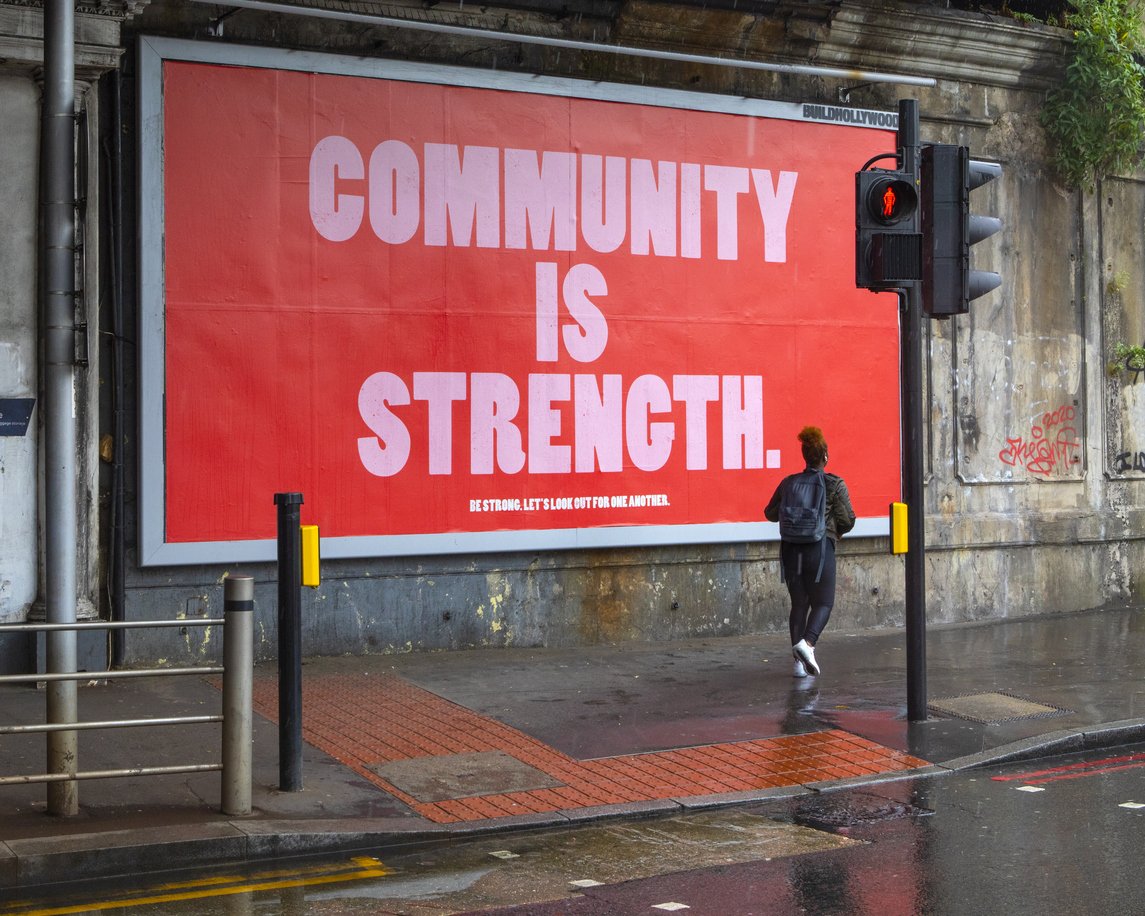
This article is, with publisher permission, adapted from Kathryn Young and Myron Anderson’s “Microaggressive Hierarchical Intersectionalities: Small Stories of Women of Color in Higher Education,” Metropolitan Universities, volume 32, no. 1 (2021). Young and Anderson’s ideas can also be found in Fix Your Climate: A Practical Guide to Reducing Microaggressions, Microbullying, and Bullying in the Academic Workplace.
Nobody in their right mind is going to call me the N-word…because true racism is being able to have power over somebody else. So that doesn’t happen to me that way. It shows up for me if I’m in a boardroom or situations where I’m the only woman or I’m the only African American person within a 100-mile radius. I can see in the energy of the people there; they don’t sense that I should be holding one of those seats. I can sense that. But I can never tell. Is it racism? Is it sexism?
—Oprah Winfrey
Winfrey’s quote exemplifies a phenomenon experienced through living in a stratified society receiving racial and gender microaggressions in the workplace. Even when women are in positions of power, there remain moments in their work lives where their race or gender or both are called into question in relation to the role they hold.
Researchers have exposed the multiple marginalities experienced by women of color on campus. Here we look at what we call hierarchical microaggressive intersectionalities (HMI).
These are everyday slights, found in higher education and elsewhere, that communicate systemic valuing (or devaluing) of a person due to the interplay between their institutional role and other identity categories like race, gender, and class. Hierarchical indicates how the position held at an institution indicates value for those who work in the institution, microaggressive indicates the impact of discriminatory experiences, and intersectionalities indicates how the women do not just experience microaggressions with one aspect of their identity, but often through many aspects of their identity simultaneously. To do this, we look at three ways that HMI indicate structural disadvantage for women and women of color—namely, deprofessionalization, (racial battle and gender) fatigue, and invisibility.
Deprofessionalization
Women, and women of color, in higher education often are not treated like professionals even when holding professional roles. Black faculty are racially stereotyped at work and are often expected to entertain their colleagues in ways not expected of their white counterparts. Faculty of color and female faculty do, and are expected to do, a disproportionate amount of service work like mentoring and advising students and junior faculty, serving as faculty advisors for campus clubs, and being on committees.
In courses, students are less likely to take female faculty of color seriously as academics, as they do not fit traditional expectations of what a professor should be (i.e., white and male). Students, not seeing female faculty of color as professionals, are more likely to challenge course content.
Faculty of color, administrators of color, and women of various backgrounds face students, other faculty, and administrators who often assume a lack of qualification for or capability of faculty or administrative work—and then must hide their feelings of frustration and annoyance that result from being treated as less than a professional over and over in the workday. The message these women receive is that they do not belong and cannot do the work—that they are not professionals.
Fatigue
Women in higher education are often professionally exhausted. According to William Smith, a professor of ethnic studies and education scholar at the University of Utah, racial battle fatigue (RBF) is a “social-psychological stress response (e.g., frustration, anger, exhaustion, physical avoidance, psychological or emotional withdrawal, escapism, acceptance of racist attributions)” associated with being a person of color and the repeated target of racism. Constant race-based discrimination can produce emotional, psychological, and physiological distress and cover up the consequences of discrimination on the material realities of marginalized faculty. RBF is the cumulative effect of being “on guard” and having to continually be prepared to respond to insults, both subtle and overt. Gender fatigue is described by Elizabeth Kelan of the University of Essex as the fatigue of trying to mentally construct workplaces as gender-neutral despite the continued evidence of gender discrimination and the powerlessness that many women feel to change these structures.
Invisibility
Faculty of color, women of color, and other women, have all pointed to their invisibility in higher education. This invisibility is often enacted by others seeing or not seeing marginalized groups. Nonrecognition or misrecognition relates to the power and privilege of the person who does not see another. Invalidating personhood through nonrecognition or misrecognition can limit faculty of color’s influence both on their schools as institutions and on school culture.
Methods
To learn more about how women in higher education experience HMIs, we analyzed 10 small stories using critical discourse analysis from the campus of Metropolitan State University of Denver (MSU)—an urban, land-grant university. This university leads the state in enrolling a diverse student body and employing a diverse faculty. MSU Denver has about 20,000 students, 95 percent of whom are in-state. About 46 percent of undergraduates are students of color; 56 percent are the first in their family to go to college, nearly 80 percent of students work full or part time, and nearly half are Pell-eligible. Full-time faculty are 74 percent white, 10 percent Latinx, five percent Black, eight percent Asian, and three percent multiracial, Native American, or other. About 52 percent of faculty on campus are women. Among the administration, 67 percent are white, 17 percent Latinx, five percent Black, six percent Asian and five percent multiracial, Native American, or other.
For the survey sample, we invited known female faculty and administrators to share personal examples of microaggressions. They were individually emailed and asked: “If you have five minutes, can you jot down an example of a microaggression that has happened to you or someone you know related to your role intersecting with an identity characteristic and send it to me?” All responded promptly.
| Race | Gender | Role |
| Person of Color | Woman | Faculty |
| White | Woman | Administrator/Faculty |
| White | Woman | Administrator/Faculty |
| Person of Color | Woman | Faculty |
| Person of Color | Woman | Administrator |
| Person of Color | Woman | Administrator |
| Person of Color | Woman | Administrator |
| Person of Color | Woman | Faculty |
| Person of Color | Woman | Administrator |
| White | Woman | Administrator/Faculty |
Findings
The small stories in the replies elicited multiple examples of deprofessionalization, fatigue, and invisibility. Seven of the 10 stories evoked fatigue, five of the 10 evoked deprofessionalization, and five evoked invisibility/erasure. Six of the 10 stories reflected two themes and two of the ten reflected all three themes.
An example of deprofessionalization:
In giving my opinion how we needed to improve the services for Freshmen students of diverse backgrounds…a highly seasoned Dr. person stated, “You only have a masters in higher education, right? Because the research says people of color fail due to….” I don’t know, remember the rest. I felt mad.
This person indicates how someone denigrated her level of education in the exchange. Her quality of work and perhaps even her intellect was called into question. This exchange provoked an emotional response that made the respondent forget the end of the conversation.
An example of fatigue:
Consequently, whenever I met with this committee, I always had to overly prepare and anticipate the potential “picking” at me.
Sign up for our free newsletters
Subscribe to NPQ's newsletters to have our top stories delivered directly to your inbox.
By signing up, you agree to our privacy policy and terms of use, and to receive messages from NPQ and our partners.
This person indicates how she always must overprepare when meeting with a specific committee. She must emotionally steel herself to be potentially picked on in the committee. It is exhausting to have to be more prepared than others and to enter meetings steeled against being treated badly.
An example of invisibility:
A colleague comes to talk about departmental issues and every issue is about a female colleague. And I am a female in leadership.
This person remarks how the other colleague sees her only as her position of leadership. They do not even question how sharing issues related to gender repeatedly might reflect on the gender of the person in leadership as well. Her gender is invisible to the colleague.
The themes were helpful in dissecting shared experiences across this group of women and in demonstrating how these experiences are microaggressive. However, until the themes are reconstituted back into small stories, they cannot show the extent of the HMI experiences for the individuals.
To give a better sense of how these different aspects interact, we dive into one small story below from a woman of color faculty member, which we reproduce in full below; the parenthetical numbers are our own.
Students and fellow faculty refusing (1) to refer to me as Dr. Anton (name changed) even when they refer to others with their full titles (2)……choosing instead to call me “Miss Anton” or just “Anton” even after I have corrected them several times. Being absolutely invisible to some faculty (3a). Nearly bumping right into me (3b) or speaking to everyone else in the room EXCEPT me in polite conversation (3c). Even standing at the bathroom sink and not speaking to me at all (3d) when they work with me on a daily basis—not faculty that I don’t know very well, no, faculty that I work with every day (4). Or walking up to someone that I am currently speaking to and starting up a conversation with the same person that I was speaking to WITHOUT even saying “excuse me” or “could I butt in for just a moment” (5)……just completely acting like I don’t exist or like they don’t see me when I am a big, round, brown woman in the room who is probably wearing a bright color like turquoise or purple or orange or yellow (6). There is NO WAY that you just didn’t “see” me unless you were trying to ignore me. (7)
Analyzing the response (referencing the notations above) we found the following:
- (1) active verbs on the part of the microaggressor: refusing, choosing, bumping, speaking, standing, walking, saying, acting, trying—indicating fatigue at always having to maneuver around others so actively trying to exclude her.
- (2) not using the formal address given to other faculty, even after correction—deprofessionalization
- (3a) stated invisibility
- (3b) example of invisibility
- (3c) example of invisibility
- (3d) example of invisibility
- (4) implied disrespect because it is known colleagues who ignore her—deprofessionalization
- (5) stated invisibility in two quick phrases
- (6) explaining how not seeing her would be impossible—invisibility
- (7) stated invisibility and implied deprofessionalization through showing that the faculty is not worth talking to.
In only 196 words, this faculty member demonstrated how often she actively becomes deprofessionalized by students and faculty who are not willing to call her “Dr.” and how she becomes invisible—remarking eight times in this short excerpt how people willfully ignore her physical presence; she is experiencing what Kimberle Crenshaw has called “intersectional invisibility.” This faculty member adds, “I could go on and on,” indicating the fatigue she experiences from many similar interactions.
Discussion
Workers prefer for their identities to not matter for interactions at work. Yet workplace interactions can be fraught with HMI. This and other small stories evidence fatigue, invisibility, and deprofessionalization in interaction with these women’s professional roles. Even if colleagues and students do not intend to ignore Dr. Anton, the impact on Dr. Anton of repeatedly being ignored and treated as less than a professional clearly has an impact on her sense of self as a professional. If small stories are a way to create a sense of who someone is in their professional sphere, then Dr. Anton’s professional sense of self is deeply, negatively impacted through these experiences. She is tired and disrespected.
Dr. Anton might not know if she is being disrespected for being a woman, a woman of color, a faculty member of color, or some combination of these, and spending time trying to figure out why she is not treated as a professional by students and her peers keeps her from focusing on being productive in other ways. This not knowing why she receives such treatment is a key component of microaggressions. She also does not know exactly how her role, gender, and race intersect for her to receive such unprofessional behaviors from others that force her to question her role at the university—a strong example of hierarchical microaggressive intersectionality.
Understanding these experiences is critical to understanding how to move forward with supporting equity and inclusion in higher education. Women, and women of color who experience deprofessionalization, fatigue, and invisibility, might begin to disengage or look elsewhere for work, somewhere that does a better job of supporting their whole selves at work.
The small story demonstrates how one woman of color, who is also a faculty member, experiences her various identities attacked simultaneously, not only because of her race, gender, or role, but through all at the same time. Being called by a first name might not be an issue for another faculty member who feels his/her role is more stable, more accepted at a university. In fact, informality could show comradery and be a way to be inclusive. Given the historical and current experiences of faculty of color, and women of color at institutions, lack of professional naming acts as a slight. Repeatedly marginalizing this female faculty of color on a seemingly individual level overlaps with reduction of women of color on campus and relates to power relations of who is “naturally” seen or unseen in professional institutions. It becomes a cumulative burden.
Implications for Achieving Equity
HMIs are set against the backdrop of under-representation on university campuses and can make people from marginalized backgrounds feel like outsiders. Discrimination creates even more stress and anxiety and amplifies feelings of alienation in a space that is already not representational of people’s identities. Campus environments can feel unsupportive and racially hostile, resulting in alienation, dissatisfaction, disidentification, and disengagement from the academy.
What can be learned about campus climate from how women in higher education explain microaggressions against them? HMIs manifest differently depending on identity contingencies, which makes them difficult to address through a “one-size-fits-all” policy approach, but there are many policy implications that can be considered, many coming from women and women of color in higher education themselves.
Institutions can center marginalized groups in strategic plans and strategic planning. They can recruit more women of color simultaneously to alleviate isolation and tokenization. They can support professional organizations that serve women and people of color. They can engage task forces to identify interactional patterns between different groups and institutional policies and procedures that reinforce, inadvertently or purposefully, a culture of social exclusion.
As institutions strive to reflect the growing diversity of their students with proportional diversity of staff, faculty, and administrators, they must also invest systemically in the supports and policies needed so that no faculty, no administrator, no staff member, no student from an historically marginalized group has to say “I could go on and on” about the microaggressions they experience in higher education.








